Naïve Art – The Movement of Childlike Whimsy
Naïve art, often referred to as Naïve painting, is a captivating genre that defies the conventions of traditional artistry. Naïve art is characterized by its charmingly unsophisticated approach, embracing a lack of formal training or not adhering to established artistic rules. This distinct genre, championed by luminaries like Henri Rousseau, draws inspiration from primitivism and childlike innocence. In this exploration, we embark on a journey to uncover the heart and soul of this art form, shedding light on Naïve art’s definition, its origins, characteristics, and the enduring legacy of its most celebrated creators.
Naïve Art Definition: What Is Naïve Art?
Naïve art, a genre that defies the boundaries of traditional artistic training, has long intrigued art enthusiasts with its charmingly unsophisticated allure. In this article, we will delve into the captivating realm of Naïve art, seeking to define its unique characteristics, origins, and the enduring appeal it holds for both artists and art lovers.

Defining Naïve Art: An Unconventional Art Form
Naïve art, also known as Naïve painting, is a distinct genre that challenges the norms of conventional artistry. It is characterized by its embrace of untrained or self-taught artists who approach their craft with an almost childlike simplicity. To truly understand Naïve art, one must explore its origins. This section will dive into the historical and artistic influences that gave rise to this unconventional art form.
We embark on a journey to uncover the roots of Naïve art, exploring where it began, when it rose to popularity and the compelling reasons behind its enduring fame.
The Early Beginnings: Folk and Outsider Art
Naïve art finds its earliest origins in the realm of folk art and outsider art. These art forms have been practiced by individuals with little or no formal artistic training throughout history. Folk art, often associated with rural communities, was driven by utilitarian purposes, such as crafting everyday objects and decorations. It was characterized by simplicity, bold colors, and a firm link to regional practices and culture. Outsider art, on the other hand, emerged as a term in the 20th century to describe the work of self-taught artists who existed outside the mainstream art world. These artists, often marginalized or institutionalized, created art as a form of personal expression, often dealing with deeply emotional or psychological themes.

Primitivism and the Avant-Garde: Influence on Naïve Art
The late 19th and early 20th centuries saw the emergence of primitivism as an artistic movement. Primitivist artists, such as Paul Gauguin (1848-1903) and Pablo Picasso (1881-1973), sought inspiration from non-Western and folk art traditions. They admired the directness and authenticity found in these forms and incorporated elements of primitivism into their own work. One of the key figures in the development of Naïve art was the French painter Henri Rousseau (1844-1910).
We will examine his artworks in more detail later in this article.
Rise to Popularity: The Birth of the “Naïve” Label
The term “Naïve art” was first coined in the early 20th century, specifically in the context of the French art scene. It was used to describe artists like Henri Rousseau, who were self-taught and exhibited a charmingly unsophisticated style. The term “Naïve” referred to the artists’ lack of formal training rather than their intellectual capacity. During this time, the avant-garde art world in Europe was searching for new forms of expression, free from the constraints of academic conventions. Naïve art, with its authenticity and rejection of formal rules, became a source of fascination for artists looking to break away from traditional artistic norms.
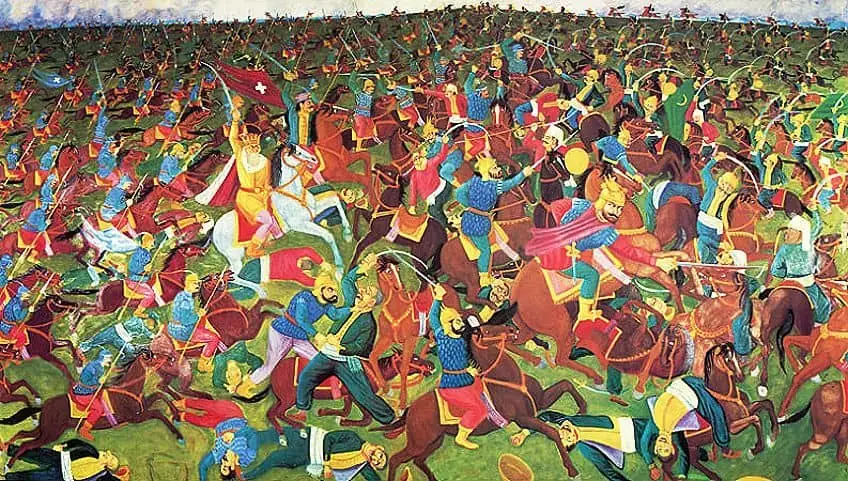
Why It Became Famous: Authenticity and Unconventionality
The fame of Naïve art can be attributed to its authenticity and unconventionality. In an art world often dominated by academic training and complex theories, Naïve art offered a refreshing and unfiltered perspective. Its directness and plainness resonated with both artists and audiences alike. Naïve artists painted what they knew and felt without the influence of established artistic movements or schools. Their work often featured everyday scenes, personal experiences, and a sense of childlike wonder.
This genuineness struck a chord with those seeking a return to more straightforward and emotionally resonant art.
The Enduring Appeal of Naïve Art: Charming the Modern Eye
The enduring appeal of Naïve art lies in its ability to captivate the modern eye with its refreshing genuineness and innocence. In a world often saturated with complex and conceptual art forms, Naïve art’s unpretentious charm offers a welcome escape. Its honesty and childlike wonder continue to resonate with contemporary audiences, reminding us of the power of uninhibited creativity and genuine self-expression. Naïve art’s timeless allure serves as a testament to the enduring fascination with art that speaks directly to the heart, transcending the boundaries of formal training and conventional artistic norms.
Naïve Painting: More About Primitivism in Painting
Naïve painting offers a unique perspective on artistic expression. Beyond its apparent purity lies a world of technical characteristics that define the genre and contribute to its enduring appeal. In this section of the article, we will embark on a journey to explore the technical elements that make Naïve painting distinct, shedding light on the brushwork, color palette, and composition that breathe life into these unrefined yet captivating works of art.

Bold and Uninhibited Brushwork
One of the hallmark characteristics of Naïve painting is its bold and uninhibited brushwork. Naïve artists often eschew traditional techniques and academic precision, opting for a more spontaneous and freehand approach. This results in brushstrokes that are often bold, irregular, and unpolished.
The absence of meticulous detail allows for a raw and authentic quality that resonates with viewers, evoking a sense of immediacy and emotional resonance.
Vivid and Unconventional Color Palette
Naïve painters are known for their vivid and unconventional use of color. The palette is often characterized by its bold and unapologetic choices, with artists opting for vibrant hues that might not adhere to traditional color theories. This fearless approach to color contributes to the sense of Naïvety and childlike wonder that defines the genre. It allows artists to convey their emotions and perceptions directly, resulting in compositions that burst with life and energy.
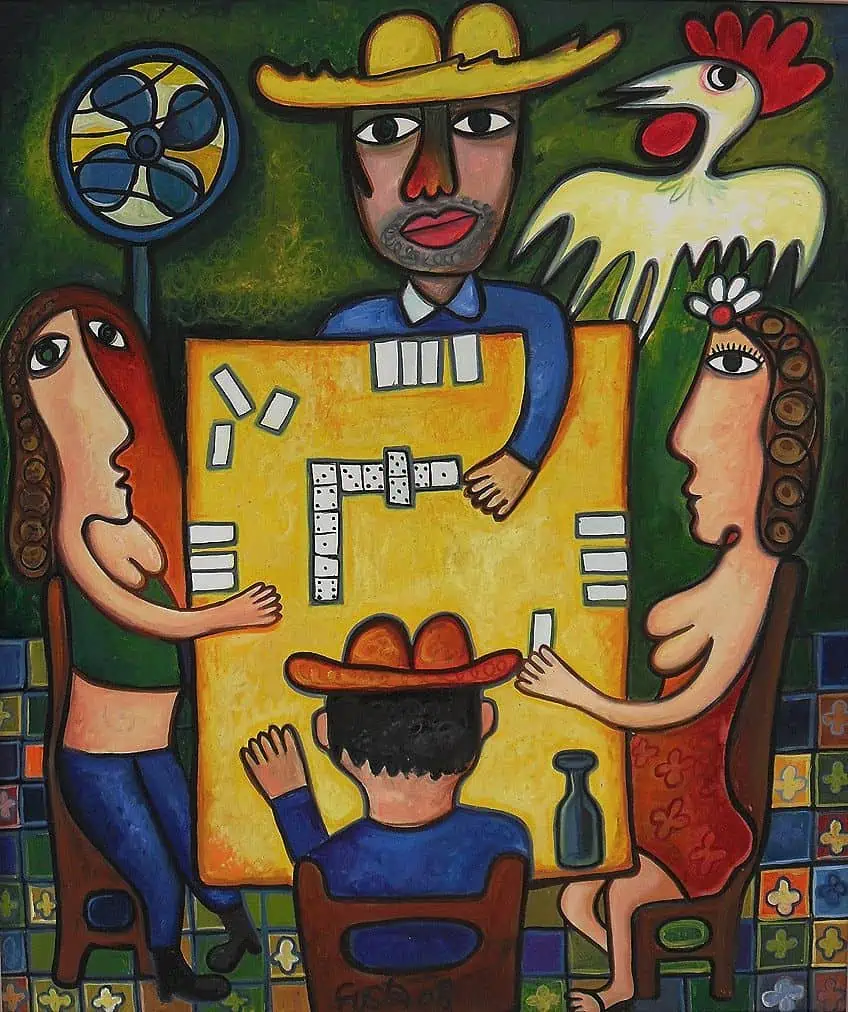
Unfiltered Subject Matter and Composition
Naïve art often features unfiltered subject matter and composition. Artists draw inspiration from their everyday lives, personal experiences, and immediate surroundings. This means that the subject matter can range from ordinary scenes of rural life to fantastical and dreamlike landscapes.
The compositions are typically straightforward and lack the complex arrangements found in more academic art forms, emphasizing the artist’s unique perspective and unadulterated creativity.
Narrative Clarity and Directness
Naïve paintings often prioritize narrative clarity and directness. The scenes depicted are usually easy to interpret, with a focus on storytelling and conveying a message or emotion. This straightforward approach invites viewers to engage directly with the artwork, as there are no layers of symbolism or abstraction to decipher. The narratives are often imbued with a sense of nostalgia, innocence, or humor, adding depth to the overall artistic experience.

Embracing Imperfections
Perhaps one of the most endearing technical characteristics of Naïve painting is its embrace of imperfections. Mistakes and quirks are not corrected but are celebrated as integral parts of the artwork. These “faults” contribute to the genuineness and genuine quality of the art, reminding viewers of the human hand behind the product.
This unapologetic acceptance of flaws enhances the emotional impact of Naïve paintings.
Henri Rousseau: The Master Naïve Art Painter
| Date of Birth | 21 May 1844 |
| Date of Death | 2 September 1910 |
| Place of Birth | Laval, France |
| Nationality | French |
| Periods | Naïve art, Post-Impressionism, and Primitivism |
Henri Rousseau, a prominent figure in the annals of art history, emerges as an enigmatic pioneer who defied convention and carved a unique path in the world of painting. In this artist abstract, we will explore the life, works, and enduring legacy of this self-taught French artist, whose contributions to the Naïve art movement and beyond continue to captivate art enthusiasts worldwide.
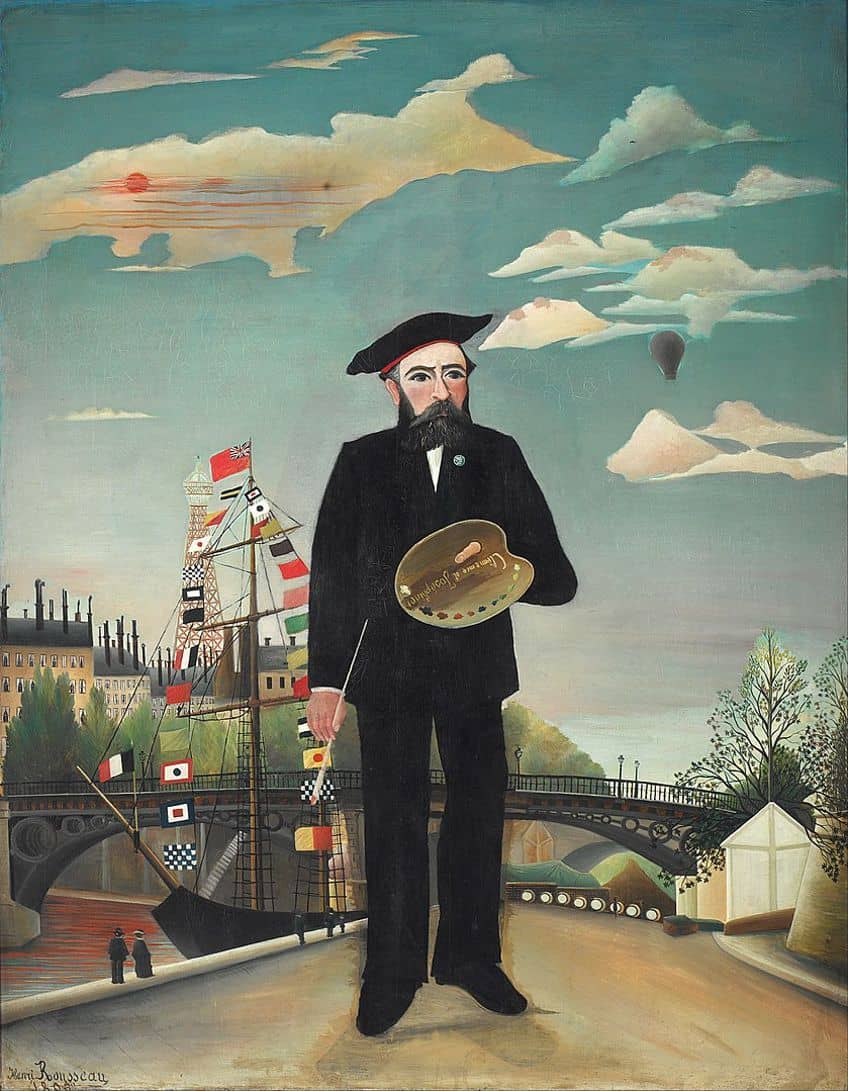
Early Life and Background
Henri Rousseau was born on May 21, 1844, in Laval, France. His humble beginnings as the son of a plumber did not hint at the artistic journey that lay ahead. With no formal artistic training, Rousseau’s career as a painter took an unconventional trajectory, making his accomplishments all the more remarkable.
A Late-Blooming Career
Rousseau’s artistic career did not fully blossom until his late 40s. While he held various jobs throughout his life, including that of a customs officer, it was his passion for painting that would ultimately define him.
This late start in the art world is proof of his perseverance and uncompromising dedication to his art.
Jungles and Dreamscapes
Rousseau’s iconic works, such as The Sleeping Gypsy (1897), transport viewers to dreamlike landscapes where the boundaries between reality and fantasy blur. His meticulous attention to detail in foliage and exotic creatures adds depth and a sense of vividness to his canvases. These jungles and dreamscapes are both inviting and enigmatic, inviting viewers to explore the lush realms of the artist’s imagination.
Recognition and Influence
While Rousseau faced skepticism and ridicule from the art establishment during his lifetime, his work eventually gained recognition and acclaim. His peers in the avant-garde art world, including Pablo Picasso and Wassily Kandinsky, recognized the genuine, untrained quality of his art and its value in challenging conventional artistic norms. This recognition would leave a lasting impact on modern art and inspire future generations of artists.
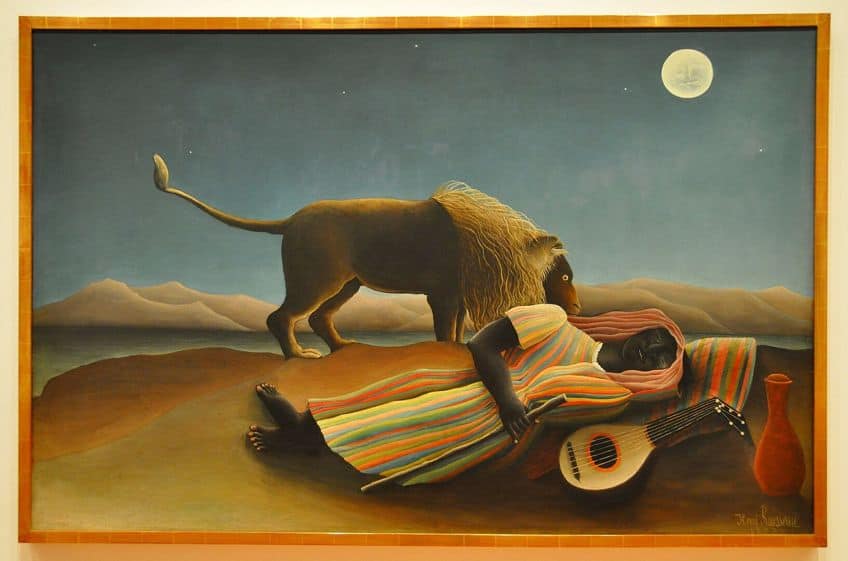
Enduring Legacy
Henri Rousseau’s enduring legacy extends beyond the confines of the Naïve art movement. His ability to capture the essence of dreams, the allure of the exotic, and the complexity of the human imagination in his works transcends time and continues to captivate audiences today. His art functions as a reminder of the force of uninhibited inventiveness and the enduring appeal of authenticity in the world of art.
Visual and Conceptual Analysis of The Dream (1910)
| Title | The Dream |
| Date | 1910 |
| Medium | Oil on canvas |
| Dimensions (cm) | 204 x 298 |
| Location | The Museum of Modern Art, New York, United States |
Henri Rousseau’s The Dream, painted in 1910, is a masterpiece of Naïve art that offers a dreamlike journey into a lush and mysterious landscape. In this visual and conceptual analysis, we will explore the intricate details and symbolism within the painting, uncovering the elements that contribute to its captivating and enigmatic allure.
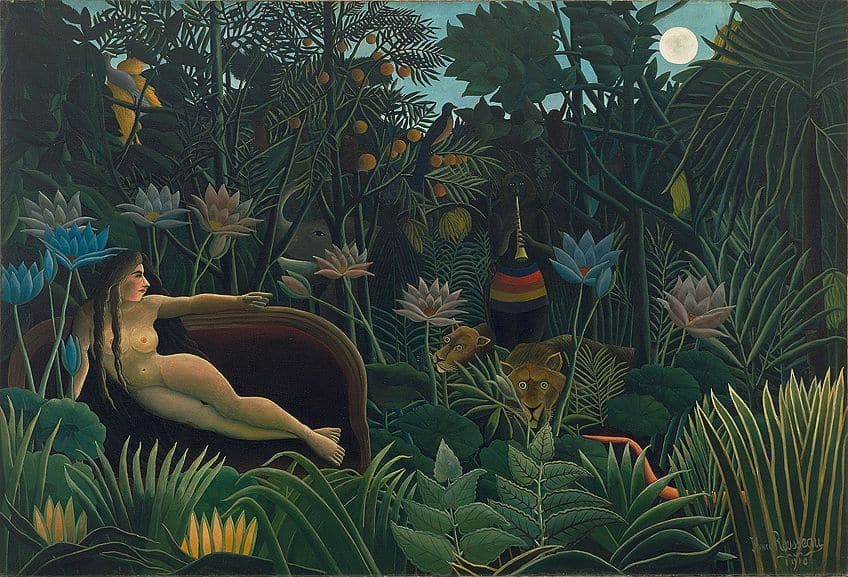
Composition and Framing
The Dream is a strikingly well-composed painting that draws the viewer’s eye to its central figure—the reclining nude woman. She is positioned prominently within the composition, lying on a sumptuous divan, her form gracefully reclined. The woman’s body is framed by a dense canopy of exotic plants, which serves as both a protective enclosure and a theatrical backdrop. This lush foliage envelops the dreamer, creating a sense of intimacy and seclusion.
Color Palette and Vibrancy
Rousseau employs a rich and vibrant color palette to bring The Dream to life. Bold, saturated colors dominate the canvas, with deep greens, vibrant reds, and radiant blues creating a sense of heightened reality. The colors evoke a lush and tropical ambiance, adding to the dreamlike quality of the scene.
The artist’s use of vivid colors not only conveys the lushness of the jungle but also contributes to the painting’s overall sense of intensity and emotional impact.
Intricate Foliage and Imaginative Flora
The jungle foliage that surrounds the dreamer is meticulously detailed, showcasing Rousseau’s technical prowess. Each leaf, branch, and blossom is rendered with precision, imbuing the scene with a sense of realism that contrasts with the dream’s fantastical elements. The imaginative flora includes oversized, otherworldly flowers and bizarrely shaped plants that add to the surreal and dreamy atmosphere.
The Dream as a Symbolic Space
At its core, The Dream serves as a metaphorical representation of the dream state. The lush and vibrant jungle that envelops the dreamer can be seen as a symbolic landscape of the subconscious mind. The dreamer’s reclined position and serene expression suggest a state of relaxation and introspection, echoing the calm often associated with dreams. Rousseau’s meticulous attention to detail in the vegetation and exotic creatures adds to the dream’s vividness, emphasizing the richness of the inner world.
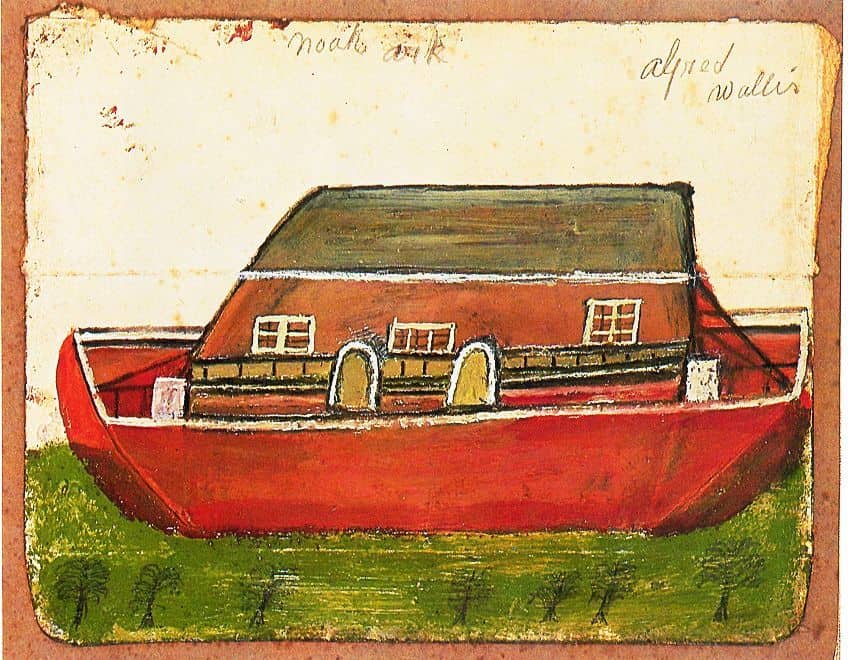
Exploring the Dreamer’s Identity
The central figure in the painting, the dreamer, remains shrouded in mystery and ambiguity. Her identity is deliberately enigmatic, and viewers are left to interpret her role within the dream. She gazes outward with an air of serenity, suggesting self-awareness within the dream state. Her nudity, rather than being sensual, symbolizes a state of vulnerability and purity—a nakedness of the soul. This character invites viewers to contemplate the concept of identity within dreams and how it may differ from waking life.
Juxtaposition of Symbolism: Moon and Snake
Rousseau masterfully employs symbolism to enrich the conceptual depth of The Dream. The luminous moon that hovers above the dreamer is a symbol of illumination and enlightenment. It represents the clarity of thought and introspection that can occur in dreams, where one’s subconscious mind is laid bare. The moon’s presence suggests that the dreamer is in a heightened state of self-awareness, capable of perceiving deeper truths. Conversely, the sinuous snake hidden in the underbrush introduces an element of danger and unpredictability. Snakes are often associated with temptation and the unconscious mind. This symbolism alludes to the mysterious and potentially unsettling aspects of dreams, where hidden desires and fears may manifest.
The juxtaposition of the serene moon and the lurking snake underscores the complexity of the dreamer’s inner world.
The Ambiguity of Reality and Fantasy
One of the most significant conceptual themes in The Dream is the blurred boundary between reality and fantasy. The jungle’s vividness and detail give it a sense of tangible reality, yet it exists within the realm of the dream. The dreamer’s calm and introspective demeanor suggests that she is fully immersed in this dream world, challenging conventional distinctions between waking life and dreams. Rousseau invites viewers to ponder the fluid nature of perception and the possibility of profound experiences within the dream state.
The Problematics of Naïve Art: A Critical Examination
Naïve art has long held a place of fascination within the art world. However, beneath the surface of its seemingly innocent aesthetic lies a complex issue that demands critical consideration. The problems of Naïve art arise primarily from the terminology and stereotypes associated with the style, especially when applied to the works of untrained artists or artists from non-Western countries. In this section of the article, we will delve into these problematic aspects, exploring why it is a challenge to label such art as “naïve” or “primitive.”
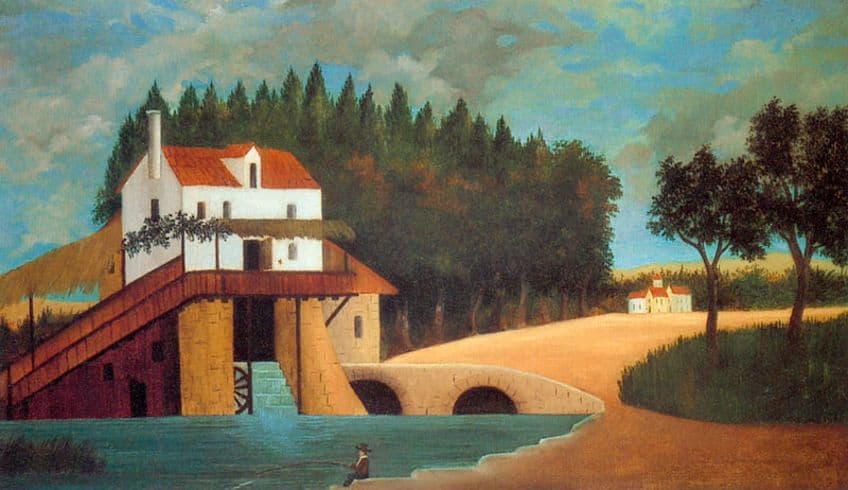
The Terminology: Reinforcing Stereotypes
One of the core issues with Naïve art lies in the terminology itself. The use of terms like “naïve” and “primitive” to describe artworks can perpetuate stereotypes and connotations that are misleading and harmful. The term “naïve” implies a lack of sophistication or understanding, which can be dismissive and reductive when applied to artists who may have a deep and nuanced understanding of their craft.
Western-Centric Bias: Artistic Hierarchies
Another problematic aspect of Naïve art is the tendency to label art from non-Western countries or cultures as “primitive” or “naïve.” This practice often stems from a Western-centric bias that positions Western art as the standard of sophistication and intellectualism, while art from other cultures is relegated to a lower status.
Such labeling can reinforce cultural hierarchies and stereotypes, diminishing the rich artistic traditions and complexities of non-Western art.
Oversimplification of Artistic Expression
Naïve art is often associated with simplicity and directness. While these qualities can be celebrated, they can also lead to an oversimplification of artistic expression. Labeling an artist’s work as “naïve” or “primitive” may overlook the deliberate choices and deep artistic intentions behind their creations. It fails to recognize the multifaceted nature of art and the diverse backgrounds and influences that shape an artist’s work.
Perpetuating the Outsider Narrative
The term “naïve art” is closely tied to the idea of outsider art, which often refers to work created by self-taught artists or those who exist outside the traditional art world. While outsider art can be powerful and unique, categorizing it as “naïve” or “primitive” can perpetuate an outsider narrative that separates such artists from the mainstream art discourse. This can contribute to the marginalization of these artists and their work.
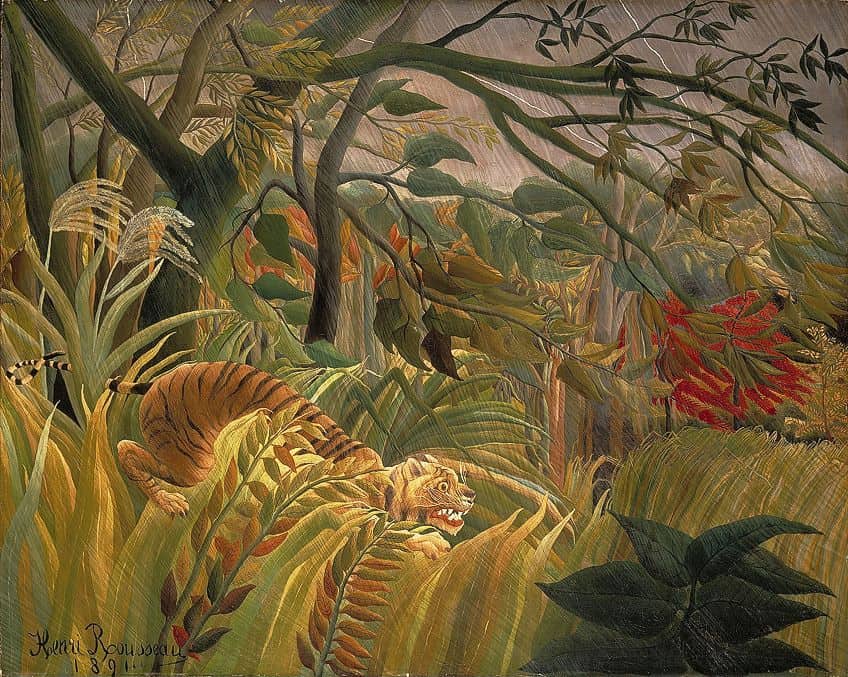
In conclusion, Naïve art, often referred to as Naïve painting, emerges as an unsung hero in the world of art—a genre that champions the unsophisticated, the untrained, and the uninhibited. What is Naïve art if not a celebration of authenticity and genuine self-expression? However, it is important to keep in mind the complexities of labeling any artist’s art as “naïve” or “primitive”. Looking at the work of Henri Rousseau, we understand that there is nothing inferior to this art form, even though it was initially compared to trained artists’ work. Naïve art, with its unique definition and enduring legacy, reminds us that within the basics lies the power to captivate, inspire, and challenge the boundaries of artistic convention.
Frequently Asked Questions
What Is Meant by Naïve Art?
Naïve art is an artistic genre characterized by its charmingly unpolished and untrained approach. In Naïve art, artists typically lack formal training or not adhering to established artistic rules, allowing them to create with a childlike innocence and authenticity. This style is often celebrated for its vivid colors, bold brushwork, and a focus on uninhibited self-expression. Naïve art captures the essence of art in its purest form, free from the constraints of academic conventions, making it a captivating and unique genre within the broader spectrum of artistic expression.
What Is the Difference Between Naïve Art and Folk Art?
The primary difference between Naïve art and folk art lies in their origins and cultural contexts. Naïve art is characterized by its basic and untrained approach, often created by individuals with little or no formal artistic training. It embraces a childlike simplicity and authenticity. In contrast, folk art is rooted in the traditions and culture of a specific community or region. Folk artists draw inspiration from their cultural heritage, crafting everyday objects and decorations that reflect the values and aesthetics of their community. While both Naïve art and folk art share a focus on authenticity, their distinctions lie in the individualistic versus communal nature of their creation and the degree of cultural influence shaping their works.
How Is Perspective Used in Naïve Art?
In Naïve art, perspective is often rendered in a simplified or unconventional manner. Artists in this genre may not adhere to conventional linear perspective techniques commonly seen in academic art. Instead, they tend to depict scenes with a flattened or two-dimensional quality, where objects of varying sizes and distances are presented on the same plane. This approach aligns with the unsophisticated and untrained nature of Naïve art, emphasizing the artist’s intuitive rather than technical understanding of perspective. While it may appear unconventional, this approach contributes to the genre’s charm and authenticity, allowing for direct and unfiltered self-expression in the artworks.
Where Did Naïve Art Originate?
Naïve art, as a distinct genre, does not have a single place of origin. Instead, it emerged independently in various regions and cultures around the world. Its roots can be traced to the traditions of folk and outsider art, where self-taught artists created works that often embraced a charmingly unsophisticated and untrained aesthetic. Naïve art found recognition and popularity in different parts of the world, including Europe, the Americas, and beyond, as artists with little or no formal training began to gain an appreciation for their unique and authentic approach to painting. While it lacks a specific birthplace, Naïve art’s enduring appeal transcends geographic boundaries, celebrating the universal value of unfiltered creativity and self-expression.
Nicolene Burger, a South African multimedia artist and creative consultant, specializes in oil painting and performance art. She earned her BA in Visual Arts from Stellenbosch University in 2017. Nicolene’s artistic journey includes exhibitions in South Korea, participation in the 2019 ICA Live Art Workshop, and solo exhibitions. She is currently pursuing a practice-based master’s degree in theater and performance. Nicolene focuses on fostering sustainable creative practices and offers coaching sessions for fellow artists, emphasizing the profound communicative power of art for healing and connection. Nicolene writes blog posts on art history for artfilemagazine with a focus on famous artists and contemporary art.
Learn more about Nicolene Burger and about us.
Cite this Article
Nicolene, Burger, “Naïve Art – The Movement of Childlike Whimsy.” artfilemagazine – Your Online Art Source. October 5, 2023. URL: https://artfilemagazine.com/naive-art/
Burger, N. (2023, 5 October). Naïve Art – The Movement of Childlike Whimsy. artfilemagazine – Your Online Art Source. https://artfilemagazine.com/naive-art/
Burger, Nicolene. “Naïve Art – The Movement of Childlike Whimsy.” artfilemagazine – Your Online Art Source, October 5, 2023. https://artfilemagazine.com/naive-art/.



